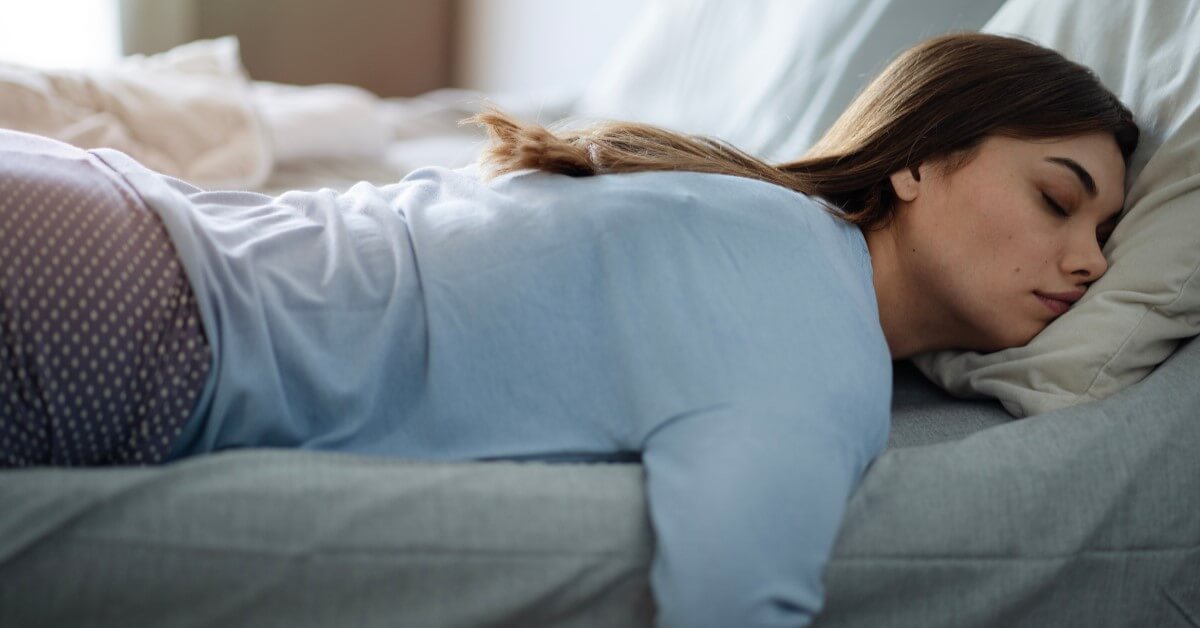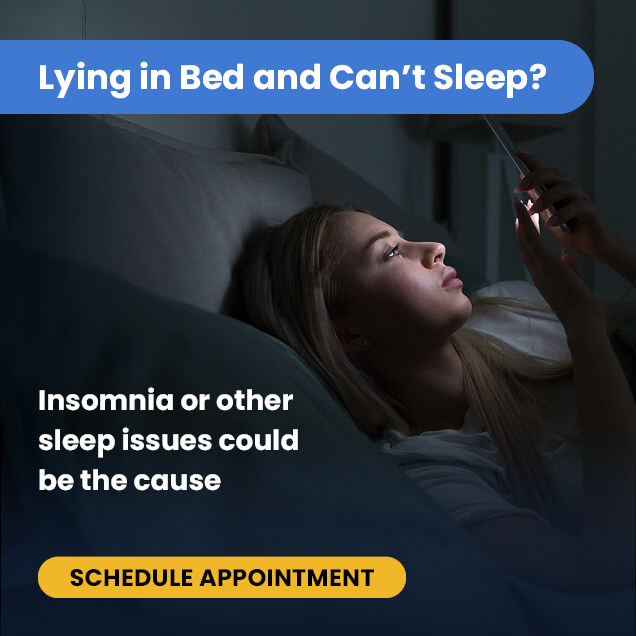How Do Sleep Disorders Affect Women? | Common Sleep Disorders in Women |
How Can Women Improve Their Sleep?
Overview
Getting enough quality sleep is critical to everyone’s overall health and well-being.
Generally, 7–9 hours of sleep each night is recommended for adults.[1] Unfortunately, experts estimate that as many as around a third of women don’t get that much sleep each night.[2]
Even one night of insufficient sleep may result in tiredness throughout the day, problems with memory and attention, and decreased performance at work and school.
Typically, how well a woman sleeps is influenced by many factors unique to women, especially the fluctuating hormonal levels that occur throughout a woman’s lifetime. Also, these factors contribute significantly to the sleep disorders women experience.
This article will explain how sleep disorders affect women, explore some common sleep disorders in women and provide tips on how women can improve their sleep.
How Do Sleep Disorders Affect Women?
Research shows that some sleep problems are more common in women than males.[3] For example, women are twice as likely to suffer from insomnia.[4] This condition makes it difficult to fall asleep or stay asleep. They are also more likely to experience sleep apnea, which causes breathing to stop and repeatedly start during the night. In addition, women are more likely to experience restless legs syndrome, which causes an irresistible urge to move the legs at night.
The causes of sleep disorders in women are complex and multifaceted. Biological, hormonal, and social factors unique to women play a huge role. For instance, hormonal changes, such as those that occur during menstruation, pregnancy, and menopause, can significantly impact sleep and sleep disorders.[3]
An exceptional study revealed that 70 percent of women who participated had trouble sleeping because of premenstrual symptoms such as cramps, headaches, and breast pain.[3]
Also, during pregnancy, sleeping can be more challenging because of hormone changes, body temperature, and physical discomfort.[3] Common problems include apprehension about becoming a parent, inability to find a comfortable sleeping position, increased urination frequency, back pain, fetal movements, and stomach discomfort.
Also, physical and mental issues can contribute to sleep troubles in women. Studies show that females are more likely to experience stress and mental problems like anxiety and depression.[5][6] These conditions make it difficult to fall or stay asleep.
In addition to physical and hormonal changes, social, work, family, and home life factors can also make it hard to sleep.[3] Even though more women are in the workforce now, most still have to care for their homes and families. Many women don’t sleep as well as they used to because of these changes. In this social and cultural setting, women can find themselves in a chronic lack of sleep and the bad health conditions that come with it.
Other factors contributing to sleep disorders in women include lifestyle factors such as a sedentary lifestyle, smoking, and alcohol consumption.
Common Sleep Disorders in Women
1) Insomnia
Insomnia is among the most frequent sleep problems among women. It’s characterized by difficulty falling or maintaining sleep, waking up too early, or feeling unrefreshed after a night’s sleep.
Experts have suggested that women are 40 percent more likely to experience insomnia than men.[7] This predisposition increases with age. Typically, as women age and enter menopause, the incidence of sleeplessness often rises dramatically. Studies indicate that 75 to 85 percent of menopausal women suffer from night sweats and hot flashes, interrupting their sleep.[8]
Moreover, women are almost twice as likely as males to experience depression and anxiety, both strongly associated with sleeplessness.[5,6]
2) Sleep Apnea
Sleep apnea is a sleep condition characterized by brief breathing pauses during sleep.[9] These interruptions result in loud snoring, choking, and gasping noises, which disturb sleep and result in excessive daytime drowsiness.
Although sleep apnea is twice as prevalent in males, it rises in women after age 50.[10] Moreover, women are more prone to develop concurrent depression, which can exacerbate their sleep troubles. Age and obesity are the two most significant risk factors for sleep apnea.[9]
During menopause, women undergo hormonal changes that increase belly fat and decrease progesterone levels.[11] These two factors may account for their more significant risk of sleep apnea.
Women who suspect they have sleep apnea should seek medical attention. There are several successful treatment options, including CPAP therapy. In addition to diet and activity modifications, hormone replacement treatment for menopause may reduce the risk.
3) Restless Legs Syndrome (RLS)
Restless legs syndrome is a disorder that causes an irresistible urge to move the legs while sitting or lying down, often accompanied by unpleasant sensations such as tingling, burning, or aching.[12] Many women with RLS have trouble sleeping since their symptoms only disappear when they get up and walk about. This sleep disturbance may result in daytime drowsiness, mood swings, anxiety, and sadness, exacerbating sleep troubles.
The prevalence of RLS in women is higher than in males, and they are also more likely to have comorbidities.[12,13] Studies show that women with more than one child are at a greater risk for RLS and that risk doubles from pregnancy until menopause.[13] Also, iron deficiency anemia – a significant risk factor for developing RLS is commoner among women.[14]
How Can Women Improve Their Sleep?
- Stick to a Regular Sleep Schedule: Strive to keep the same bedtime and wake time each day, including on the weekends, for optimal sleep quality.
- Create a Calming Bedtime Routine: Try winding down with light reading, a hot bath, or calming music before sleeping.
- Ensure your Sleeping Environment is Comfortable: Ensure your room is calm, quiet, and dark. Use comfortable pillows and a supportive mattress.
- Limit Screen Time Before Bed: A person’s internal clock might be thrown off by the blue light generated by technological gadgets. Therefore, put away the devices an hour or more before hitting the sack.
- Watch What You Eat and Drink: If you’re having trouble sleeping, it’s best to avoid stimulating substances like coffee, nicotine, and alcohol just before bed. You could try some herbal tea or hot milk instead.
- Exercise: Daytime exercise has been shown to affect sleep quality positively. Yet, if you want a good night’s sleep, you shouldn’t work out just before bed.
- Manage Stress: High-stress levels can make falling and staying asleep difficult. Try relaxation techniques like meditation, yoga, or deep breathing exercises to help manage stress.
Remember that everyone has unique sleep requirements. So, try a few different approaches until you discover one that clicks. Go to a doctor if you still can’t get to sleep after implementing the tips mentioned earlier.
References:
- Consensus Conference Panel, Watson, N. F., Badr, M. S., Belenky, G., Bliwise, D. L., Buxton, O. M., Buysse, D., Dinges, D. F., Gangwisch, J., Grandner, M. A., Kushida, C., Malhotra, R. K., Martin, J. L., Patel, S. R., Quan, S. F., Tasali, E., Non-Participating Observers, Twery, M., Croft, J. B., … Heald, J. L. (2015). Recommended amount of sleep for a healthy adult: A joint consensus statement of the American Academy of Sleep Medicine and Sleep Research Society. Journal of Clinical Sleep Medicine: JCSM: Official Publication of the American Academy of Sleep Medicine, 11(6), 591–592. https://doi.org/10.5664/jcsm.4758CDC. (2022b, November 2). Adults. Centers for Disease Control and Prevention. https://www.cdc.gov/sleep/data-and-statistics/adults.html
- Frange, C., Banzoli, C. V., Colombo, A. E., Siegler, M., Coelho, G., Bezerra, A. G., Csermak, M., Naufel, M. F., Cesar-Netto, C., Andersen, M. L., Girão, M. J. B. C., Tufik, S., & Hachul, H. (2017). Women’s sleep disorders: Integrative care. Sleep Science (Sao Paulo, Brazil), 10(4), 174–180. https://doi.org/10.5935/1984-0063.20170030
- Zhang, B., & Wing, Y.-K. (2006). Sex differences in insomnia: a meta-analysis. Sleep, 29(1), 85–93. https://doi.org/10.1093/sleep/29.1.85
- Albert, P. R. (2015). Why is depression more prevalent in women? Journal of Psychiatry & Neuroscience: JPN, 40(4), 219–221. https://doi.org/10.1503/jpn.150205
- McLean, C. P., Asnaani, A., Litz, B. T., & Hofmann, S. G. (2011). Gender differences in anxiety disorders: prevalence, course of illness, comorbidity and burden of illness. Journal of Psychiatric Research, 45(8), 1027–1035. https://doi.org/10.1016/j.jpsychires.2011.03.006
- Mallampalli, M. P., & Carter, C. L. (2014). Exploring sex and gender differences in sleep health: a Society for Women’s Health Research Report. Journal of Women’s Health (2002), 23(7), 553–562. https://doi.org/10.1089/jwh.2014.4816
- Pinkerton, J. V. (n.d.). Menopause. MSD Manual Consumer Version. Retrieved March 23, 2023, from https://www.merckmanuals.com/home/women-s-health-issues/menopause/menopause
- Obstructive sleep apnea – adults. (n.d.). Medlineplus.gov. Retrieved March 23, 2023, from https://medlineplus.gov/ency/article/000811.htm
- Lin, C. M., Davidson, T. M., & Ancoli-Israel, S. (2008). Gender differences in obstructive sleep apnea and treatment implications. Sleep Medicine Reviews, 12(6), 481–496. https://doi.org/10.1016/j.smrv.2007.11.003
- Ruchała, M., Bromińska, B., Cyrańska-Chyrek, E., Kuźnar-Kamińska, B., Kostrzewska, M., & Batura-Gabryel, H. (2017). Obstructive sleep apnea and hormones – a novel insight. Archives of Medical Science: AMS, 13(4), 875–884. https://doi.org/10.5114/aoms.2016.61499
- Hening, W. A. (1999). Restless legs syndrome. Current Treatment Options in Neurology, 1(4), 309–319. https://doi.org/10.1007/s11940-999-0021-9
- Seeman, M. V. (2020). Why are women prone to restless legs syndrome? International Journal of Environmental Research and Public Health, 17(1), 368. https://doi.org/10.3390/ijerph17010368
- Allen, R. P., Auerbach, S., Bahrain, H., Auerbach, M., & Earley, C. J. (2013). The prevalence and impact of restless legs syndrome on patients with iron deficiency anemia. American Journal of Hematology, 88(4), 261–264. https://doi.org/10.1002/ajh.23397






